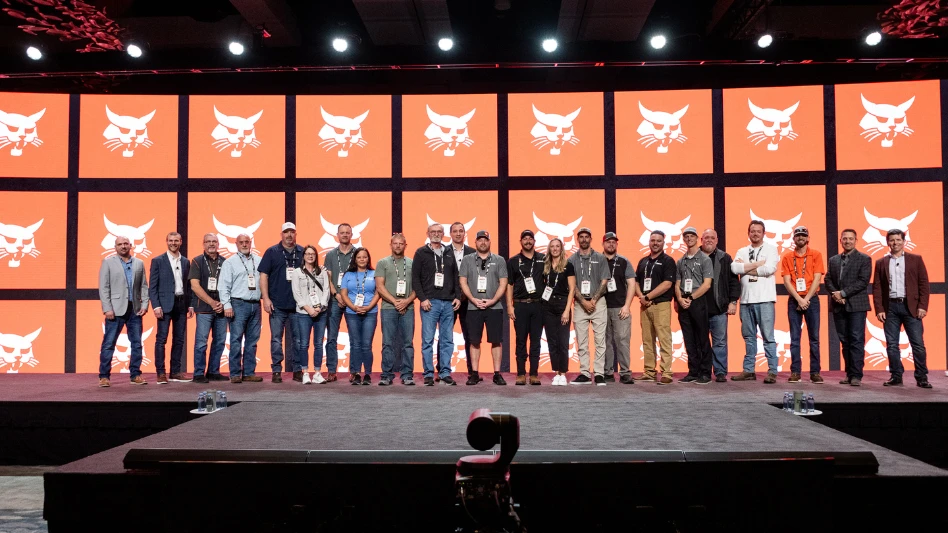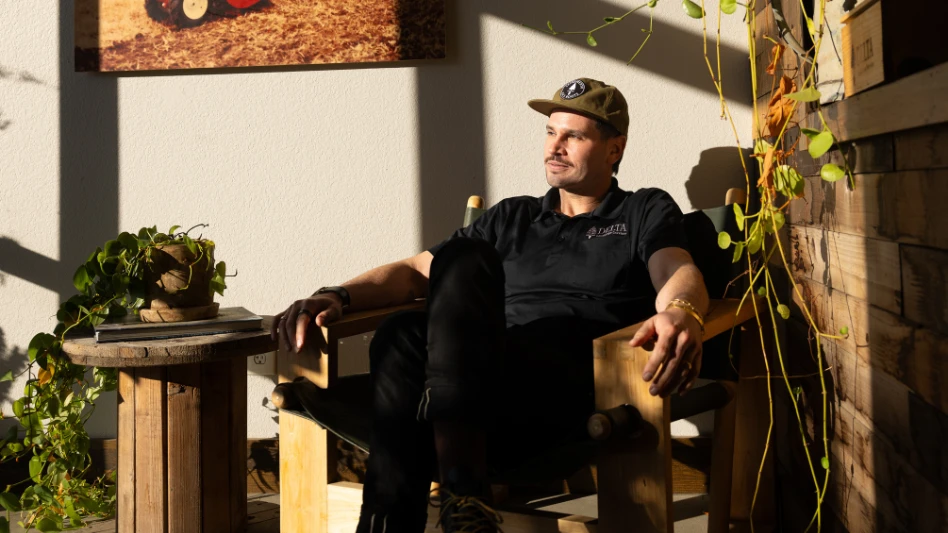A pool was once the pinnacle of outdoor entertainment. Today, as elaborate water features and outdoor kitchens are commonplace in backyards nationwide, having a pool alone has become, well, passé. Homeowners are looking past the standard landscaped yard and swimming hole and are seeking to kick it up a notch.
Landscape designers and architects have responded with basketball courts, putting greens, bocce ball courts, detailed children’s play structures – nothing is out of the question for some active families. Well-thought-out designs and good vendor relationships allow landscape companies to turn once-average gardens into mini resort settings. Some savvy designers and installers have even created niches for themselves in court consulting and contracting.
With a profit margin of about $3 and up per square foot, according to landscape contractor Darin Chamberlin, designing and installing recreation areas is a field that deserves some consideration.
About five years ago, Chamberlin, president of Cedar Rapids, Iowa-based Chamberlin Landscaping and Backyard Sports Center, began investigating athletic court installation for part of a $100,000 backyard he was designing. With no court-installing companies in his area, he sourced the materials himself, successfully completed the construction and soon received a slew of referrals. “By the end of the first year I did five courts and thought, ‘What a nice little add-on for my landscaping business.’”
Chamberlin, who also installs putting greens, says greens and basketball courts typically cost $12 to $15 per square foot. Bocce ball courts, another popular backyard recreation offering, cost $19 to $25 per square foot, says David Brewer, owner of Brewer Landscape Construction and its bocce court-building division, Bocce Brew, in San Rafael, Calif. He has designed and constructed more than 100 bocce ball courts at homes, bed-and-breakfasts and wineries in Northern California over the last decade. At 12 feet by 60 feet, bocce courts are popular because they take up less yard space than tennis courts or basketball courts.
Like any new service offering, there are challenges to creating recreation areas in backyards, designers say. Careful court placement, softening harsh edges, deliberately dividing up spaces and creating privacy are important things to remember so clients – and their neighbors – aren’t left with unsightly, institutional views.
Safety is one major concern, especially when it comes to children’s play areas. “You want to hide them so they blend in, but so you’re not obstructing views from an area where parents are sitting and are able to watch their kids,” says Brent Menghini, landscape designer/project manager for Highland Outdoor, Kansas City, Kan.
Rec area placement is probably the most vital when it comes to design because the courts and structures themselves are often unattractive. “The biggest thing is making sure it doesn’t stand out and irritate the neighbors,” Menghini says.
Chamberlin agrees that the neighbors are one concern, but homeowners themselves often have to reconcile aesthetic issues before installation. “Wives can be upset sometimes when the husband wants a court with bright colors,” he says. In these situations, he suggests clients nix team colors and logos and instead choose rich colors that blend well with the landscape, like forest green and burgundy, and possibly even leave off the lines on basketball courts or soccer fields. This typically isn’t an issue with the more natural-looking putting greens or bocce courts, designers say.
Another way to naturalize courts, fields and putting greens is to use meadow grasses to transition from the synthetic area to the lawn. “We’ve used grasses that can take foot traffic and a lot of abuse – like a red festuca,” says Bud Stuckey, owner of Felton, Calif.-based Gardens by Design and former test gardener for Sunset magazine.
Creating an organic feel and carefully selecting plants around the rec structures is crucial, designers say. “These areas can look ugly, especially if they’re just giant courts with nothing around the perimeter,” Chamberlin says. “That’s like installing a water garden with no plantings – it looks like a giant bird bath.”
Practical plant choice and smart design are what elevate them from the neighborhood eyesore to a fun, attractively landscaped yard.
When selecting a plant palette, consider the guidelines for landscaping around pool areas. Many of the same rules apply, like avoiding thorny plants that could scratch family members and fragile plants that are vulnerable to being trampled. Designers also should leave enough room for walkways and spectators, Stuckey says.
To make these areas as low maintenance as possible, choose low-litter plants, avoiding those that will drop flowers or fruit onto the playing surface. Some plants that may be appropriate for rec area landscaping include: ferns (any kind), palms, Dracaenas, Agapanthus, cannas and daylilies.
Using plants to create screens is another technique that many rec area designers use. “These areas can be unattractive and there can be hooping and hollering, so privacy is a concern,” Stuckey says. Hedges are one solution, but may be too severe or require too much maintenance for some clients. The right mix of evergreens, other trees and shrubs that grow 6 to 8 feet may be a better idea. For lower-growing screens (less than 15 feet), Wilson Bros. Nursery in McDonough, Ga., recommends selecting about eight plants, grouping them in twos, threes or fours and planting them in a staggered line to provide a better visual, wind and sound barrier than planting in a straight row. This strategy looks natural, adds interest and minimizes the risk for the spread of disease. Depending on climate, Wax Myrtle, Cleyera, arborvitae, Honeysuckle, juniper, Sweet Olive and privet are appropriate plants for creating privacy.

Explore the May 2007 Issue
Check out more from this issue and find your next story to read.
Latest from Lawn & Landscape
- Coxreels expands V-100 Series product line
- Landscape Workshop expands with 2 acquisitions
- Wilson360 adds Daniel Grange as new consultant
- Batman and business
- CH Products releases new tree stabilizer
- Savannah Bananas founder Jesse Cole to speak at Equip Exposition
- Catch up on last year's Benchmarking report
- Davey Tree promotes Kevin Marks as VP of Western operations





